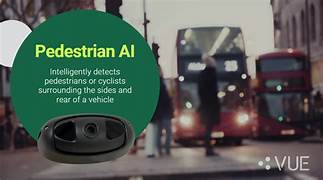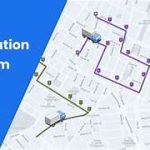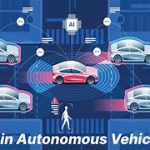AI in Pedestrian Detection and Avoidance Systems: Enhancing Safety and Mobility
As urban areas grow denser, the interaction between pedestrians and vehicles becomes increasingly critical to ensuring road safety. According to the World Health Organization (WHO), pedestrian fatalities account for 23% of global traffic-related deaths, highlighting the urgent need for innovative safety measures. Artificial Intelligence (AI) has emerged as a transformative force in addressing this challenge, revolutionizing pedestrian detection and avoidance systems in modern vehicles.
This article explores the role of AI in pedestrian safety, the technologies powering these systems, real-world applications, and the challenges and future prospects of AI-driven pedestrian detection and avoidance.
The Importance of Pedestrian Detection and Avoidance
Pedestrian safety is a key component of urban mobility. Traditional measures such as crosswalks, traffic lights, and speed limits, while effective, are limited by human error and compliance rates. Pedestrian detection and avoidance systems powered by AI provide dynamic, real-time solutions to address these limitations. These systems aim to:
- Prevent Accidents: By detecting pedestrians early and taking corrective action to avoid collisions.
- Enhance Driver Awareness: By providing visual and auditory alerts in critical situations.
- Facilitate Autonomous Driving: By enabling vehicles to navigate safely in pedestrian-heavy areas.
How AI Powers Pedestrian Detection and Avoidance Systems
AI leverages advanced technologies such as computer vision, machine learning, and sensor fusion to enhance pedestrian detection and avoidance capabilities. Here’s how these technologies work together:
1. Sensor Data Collection
AI-driven systems rely on data from multiple sensors installed in vehicles, including:
- Cameras: High-resolution cameras capture real-time images and video of the vehicle’s surroundings.
- Radar: Radar systems detect objects and measure their distance, speed, and trajectory.
- LiDAR (Light Detection and Ranging): LiDAR generates detailed 3D maps of the environment, helping identify pedestrians with high precision.
- Ultrasonic Sensors: Often used for close-range detection, such as during parking or low-speed maneuvers.
2. Computer Vision
Computer vision algorithms process images captured by cameras to identify and classify pedestrians. These algorithms use convolutional neural networks (CNNs) to detect features such as human shapes, movements, and positions.
3. Machine Learning
Machine learning models are trained on vast datasets containing various scenarios, lighting conditions, and pedestrian behaviors. Over time, these models improve their ability to detect pedestrians accurately, even in challenging conditions like low light or heavy rain.
4. Sensor Fusion
By combining data from multiple sensors, AI systems create a comprehensive understanding of the vehicle’s surroundings. For example, integrating data from cameras and radar can improve detection accuracy and reduce false positives.
5. Predictive Analytics
AI systems analyze pedestrian movement patterns to predict their future actions. This allows the vehicle to anticipate whether a pedestrian might step onto the road, enabling proactive avoidance measures.
6. Real-Time Decision-Making
Once a pedestrian is detected, the AI system evaluates the situation and determines the best course of action, such as alerting the driver, applying brakes, or steering away to avoid a collision.
Applications of AI in Pedestrian Detection and Avoidance
AI-driven pedestrian detection and avoidance systems have diverse applications across various domains:
1. Advanced Driver Assistance Systems (ADAS)
ADAS integrates pedestrian detection as a key feature, providing drivers with alerts and automated braking to prevent collisions. Many modern vehicles come equipped with ADAS as standard or optional safety features.
2. Autonomous Vehicles
Self-driving cars rely heavily on AI for pedestrian detection and avoidance. These vehicles use AI to navigate complex urban environments, ensuring the safety of pedestrians and other road users.
3. Smart City Infrastructure
AI-powered pedestrian detection systems are also being integrated into smart city infrastructure. For example, cameras at intersections can detect pedestrians and adjust traffic signals to prioritize their movement.
4. Public Transportation
AI enhances pedestrian safety in public transportation by assisting buses and trams in crowded areas, where the risk of accidents is higher.
5. Fleet Management
Delivery and logistics companies use AI-powered systems to ensure safe operations, especially in pedestrian-dense areas like residential neighborhoods and city centers.
Benefits of AI-Driven Pedestrian Detection and Avoidance Systems
The adoption of AI in pedestrian safety offers numerous advantages:
1. Improved Road Safety
By detecting pedestrians early and avoiding collisions, AI significantly reduces traffic-related injuries and fatalities.
2. Enhanced Driver Confidence
Drivers benefit from the added layer of safety provided by AI systems, especially in high-stress environments like busy intersections or during adverse weather conditions.
3. Greater Efficiency
AI systems enable smoother traffic flow by reducing accident-related delays and congestion.
4. Accessibility
For individuals with mobility challenges, AI-powered pedestrian detection ensures safer and more inclusive urban environments.
5. Environmental Benefits
Avoiding sudden braking and idling caused by accidents can reduce fuel consumption and vehicle emissions, contributing to environmental sustainability.
Challenges in Implementing AI for Pedestrian Detection
While AI-driven systems hold immense promise, several challenges must be addressed:
1. Data Quality and Diversity
AI models require diverse training datasets to perform effectively in all scenarios. Limited representation of certain conditions, such as night-time or rural environments, can compromise detection accuracy.
2. Computational Complexity
Processing real-time data from multiple sensors requires significant computational power. Ensuring fast and accurate decision-making in low-latency environments remains a challenge.
3. False Positives and Negatives
AI systems can occasionally misclassify objects or fail to detect pedestrians altogether. Reducing these errors is critical to building trust in the technology.
4. Weather and Lighting Conditions
Adverse conditions like fog, rain, or low light can affect sensor performance and reduce detection accuracy.
5. Cost
The high cost of sensors and AI systems can limit adoption, especially in budget-friendly vehicle segments.
6. Ethical Considerations
AI systems must prioritize decisions ethically in unavoidable collision scenarios, raising questions about accountability and fairness.
Future Prospects for AI in Pedestrian Safety
The future of AI in pedestrian detection and avoidance looks promising, with advancements expected in several areas:
1. Enhanced Perception
Improved AI algorithms and sensor technologies will enable more accurate detection of pedestrians in complex and dynamic environments.
2. Integration with V2X Communication
Vehicle-to-Everything (V2X) communication allows vehicles to exchange information with other road users and infrastructure. This integration can enhance pedestrian safety by providing additional context to AI systems.
3. Edge Computing
Edge computing reduces latency by processing data locally within the vehicle, enabling faster decision-making.
4. Personalized Safety Features
Future AI systems may adapt to individual driving styles and preferences, providing tailored safety alerts and interventions.
5. Expansion to Developing Regions
As the cost of AI systems decreases, pedestrian detection technologies can become more accessible to developing regions, where road safety is often a significant concern.
6. Regulatory Support
Governments and regulatory bodies are likely to mandate AI-powered pedestrian detection systems as part of vehicle safety standards, driving wider adoption.
Conclusion
AI-driven pedestrian detection and avoidance systems represent a significant leap forward in road safety and urban mobility. By leveraging advanced technologies like computer vision, machine learning, and sensor fusion, these systems enhance driver awareness, prevent accidents, and pave the way for autonomous transportation.
While challenges such as cost, data quality, and ethical considerations persist, ongoing advancements in AI and sensor technology promise to overcome these hurdles. The integration of pedestrian detection systems into smart city infrastructure and autonomous vehicles further underscores their potential to revolutionize how we navigate urban environments.
As AI continues to evolve, its role in pedestrian safety will become even more integral, ensuring safer streets and fostering sustainable, inclusive cities for all.


